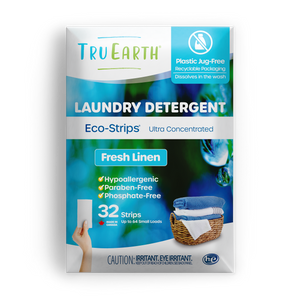Linen, known for its timeless elegance and breathability, is a fabric that has been cherished for centuries. However, achieving that crisp and polished look on linen garments, similar to what starch offers for other fabrics, is a question that often arises. Can you starch linen?
This extensive blog will explore the intricate relationship between linen and starch. We'll explore the benefits, potential drawbacks, and alternatives to starching linen fabrics, ensuring you have all the information you need to maintain your linen garments with style and confidence.

Understanding Linen: The Timeless Fabric
Before we look into starching linen, let's familiarize ourselves with the essence of this remarkable fabric:
Unpacking Linen's Origins
Linen, a textile spun from the fibers of the flax plant, holds a storied history. Its legacy is woven with threads of versatility stemming from its lightweight, breathable, and moisture-absorbing qualities. Linen is preferred for warm-weather attire and boasts an ageless, textured aesthetic.
Linen's Unique Wrinkle Tendency
An inherent feature that sets linen apart is its tendency to wrinkle easily. Linen garments often develop creases with wear, and this natural wrinkling has contributed to their casual and relaxed charm.
The Science Behind Starching
Before we explore the suitability of starching linen, let's pause and look deep into the intricate workings of starch and its functions. This will provide valuable insights into the potential interaction between starch and this versatile fabric.
The Starch Process
Starch is a natural carbohydrate from corn, wheat, or potatoes. Starch fills the gaps between fibers when applied to fabric and heated, creating a stiffening effect. This is why starching is commonly used to achieve a crisp and polished appearance in clothing.
Can You Starch Linen?
Let's address the burning question: Can you effectively starch linen garments?
The Challenge of Starching Linen
Linen, a natural fiber with an open weave, can readily absorb starch. However, due to its tendency to wrinkle, starch may offer a different level of crispness than it does on other fabrics.
Linen's breathable nature allows moisture to penetrate, potentially causing the starch to break down faster than on less porous fabrics.
Possible Drawbacks of Starching Linen
While starching linen is feasible, it comes with potential disadvantages:
Reduced Comfort
Starching linen can make the fabric feel stiff and less pliable against the skin. Comfort, especially in warm weather, is a crucial consideration.
Residue Concerns
Linen can be more prone to starch buildup, potentially affecting the appearance and texture of the garment. This residue might become more noticeable on the fabric over time.
Diminished Breathability
Linen's breathability, a prized feature, may be compromised when applying starch, reducing its suitability for hot and humid climates.
Alternatives to Starching Linen
Given the complexities of starching linen, there are alternative methods to achieve a polished appearance:
Ironing Linen
Ironing is a straightforward way to reduce linen wrinkles. Use a steam iron and select the appropriate heat setting for linen to remove creases effectively.
Wrinkle-Resistant Linen Blends
Some linen garments are blended with other fibers, such as cotton or synthetic materials, to reduce wrinkling. These blends can offer a more polished appearance with less effort.
Professional Dry Cleaning
For linen pieces that require a pristine finish, consider professional dry cleaning. Dry cleaners have the expertise and equipment to handle linen's unique characteristics.
Wrinkle-Prevention Tips for Linen
To keep your linen garments looking fresh and wrinkle-free, follow these tips:
- Proper Storage: Hang your linen garments in a cool, dry place to allow wrinkles to fall out naturally.
- Steam Showers: If you have a linen piece with stubborn wrinkles, consider hanging it in your bathroom during a hot shower. The steam can help relax the wrinkles.
- Fold with Care: When storing linen items in drawers or shelves, fold them carefully to minimize creases.

Final Thoughts- Linen's Uniqueness
In conclusion, the relationship between linen and starch is nuanced. While it's possible to starch linen for a crisper appearance, it may have different results than other fabrics. Starching can compromise linen's comfort, breathability, and natural texture.
Instead of relying solely on starch, consider alternative methods like ironing, wrinkle-resistant linen blends, or professional dry cleaning for special occasions. Linen's unique charm lies in its relaxed, natural look, and with the right care and maintenance, you can enjoy the elegance of linen without sacrificing comfort or breathability. The next time you do your linen attire, you'll know how to choose the best approach for maintaining its timeless appeal.


